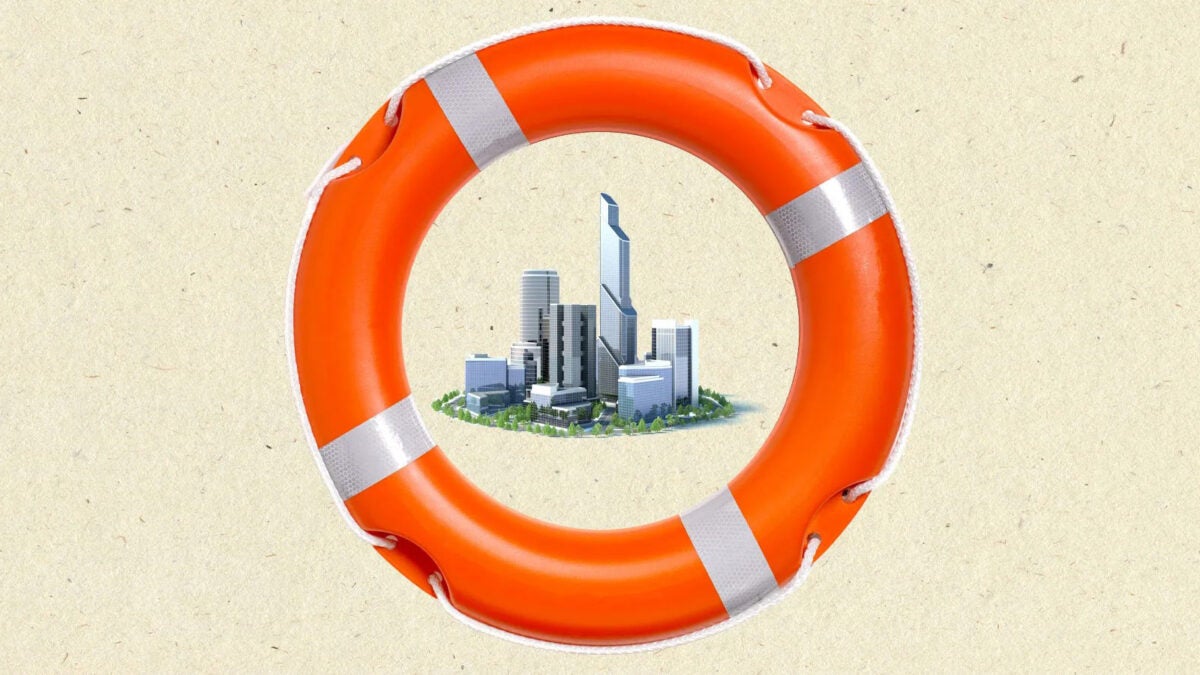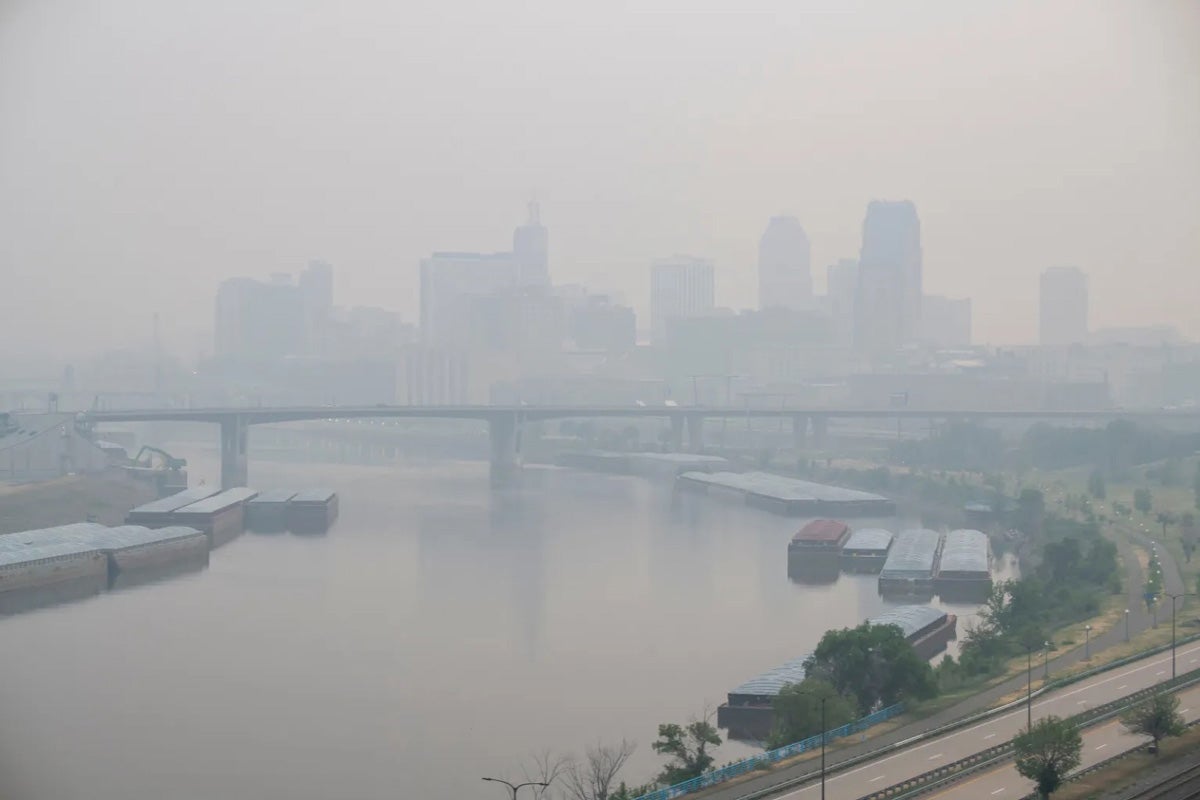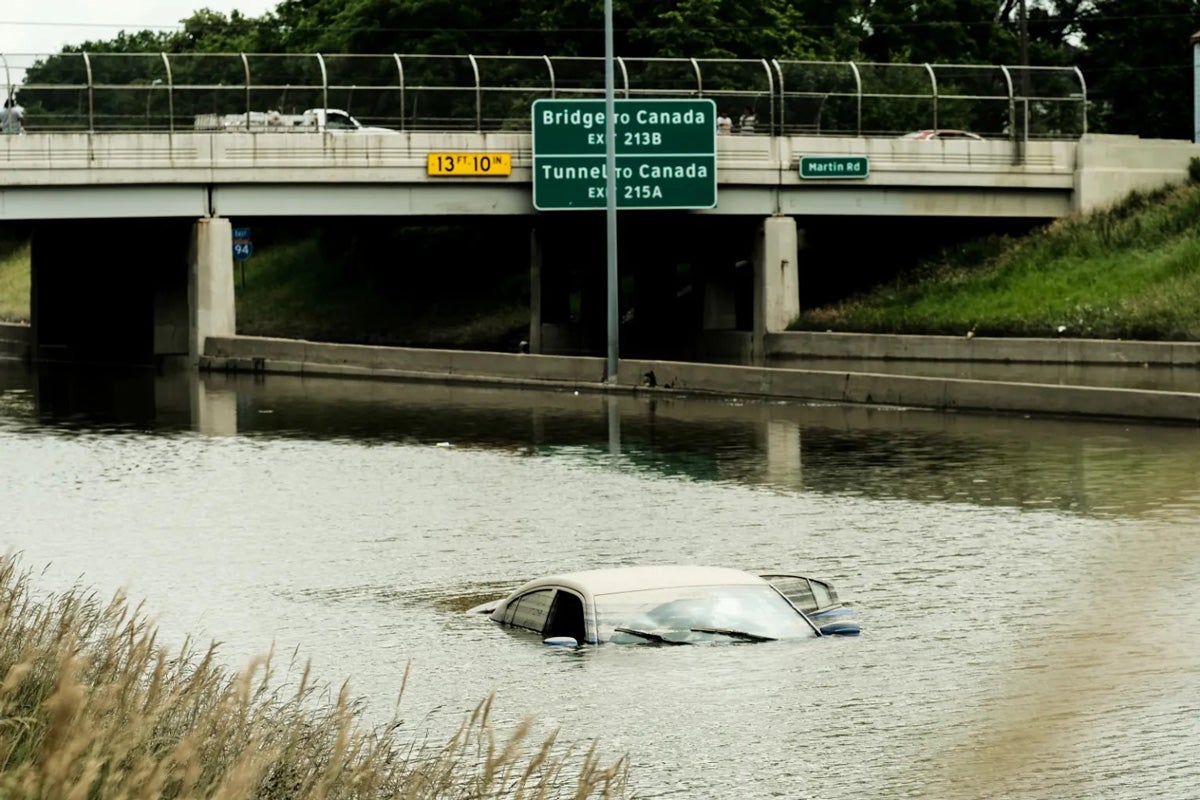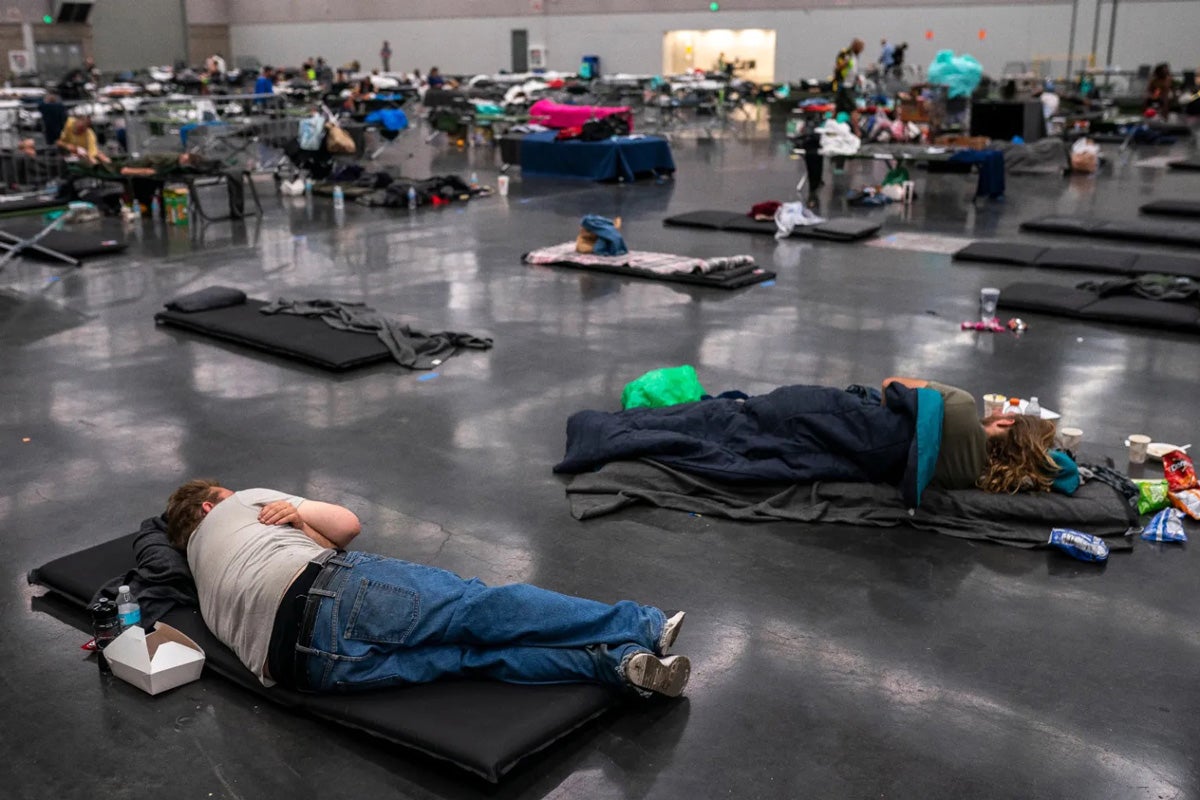
Ideas
Why “climate havens” might be closer to home than you’d think
This story was originally published by Grist. Sign up for Grist’s weekly newsletter here.
Moving is never easy—and it’s even harder in the era of global warming. Beyond the usual concerns like jobs, affordability, and proximity to family and friends, people are now considering rising seas, wildfire smoke, and heat waves. According to a recent survey, nearly a third of Americans named climate change as a motivation to move.
Some are headed to “climate havens,” the places experts say will be relatively pleasant to live in as the world heats up, like Duluth, Minnesota; Ann Arbor, Michigan; and Burlington, Vermont. Researchers have pointed to the Great Lakes region, and Michigan in particular, as a destination for people seeking to escape the storm-ravaged Southeast or the parched Southwest. The Midwest holds special appeal with its abundant fresh water, cooler summers, and comparatively little risk from hurricanes and wildfires.
But as the federal government’s comprehensive Fifth National Climate Assessment detailed last week, there’s nowhere you can truly hide from climate change. This summer, historic wildfires in Canada sent unhealthy smoke swirling into the Midwest and Northeast, bringing apocalyptic skies from Minneapolis to Buffalo, New York, and all the supposed refuges in between. Heavy rain in July caused devastating flash floods in Vermont. Three years earlier, a ProPublica analysis had identified the hardest-hit place in the state, Lamoille County, as the safest county in the U.S. “It’s time to put the idea of climate safe havens to rest,” the climate news site Heatmap declared this summer.
Still, the new assessment demonstrates that some places are safer than others. The report says that moving away from more dangerous spots to less precarious ones is a solution that’s already happening—not only in coastal areas in the Southeast, but also in flood zones in the Midwest. The assessment also makes it clear that vulnerability is often created by city planning choices. Climate havens may not be something nature hands us, but something we have to build ourselves. And finding refuge doesn’t necessarily entail moving across the country; given the right preparations, it could be closer to home than you think.
“While the climate is going to change, how we respond as a species, as a society, as individuals, I think will really determine what is a ‘refuge’ for us and what isn’t,” said Vivek Shandas, a professor at Portland State University whose research focuses on how cities can adapt to climate change. Shandas, who worked on the Northwest chapter of the report, says that it points to how human choices—policies and urban design decisions—have either put people more in harm’s way or brought them greater safety.

Wildfire smoke from Canada casts a thick haze over St. Paul, Minnesota, June 15, 2023.
Michael Siluk / UCG / Universal Images Group via Getty Images
Tulsa, Oklahoma, was once the country’s most frequently flooded city, according to the assessment. After a disaster in 1984 submerged 7,000 homes and killed 14 people, the city came together to fix the problem with an aggressive flood-control plan. They constructed a network of drainage systems, created green spaces to soak up water, and put strict rules on where new homes could be built. Over the last three decades, Tulsa has also cleared roughly 1,000 buildings out of flood zones through a buyout program. Officials say the effort has saved the city millions of dollars, and the Federal Emergency Management Agency gave Tulsa its top risk-reduction rating last year.
That’s the kind of tough work that lies ahead of any Midwest city aiming to protect its residents. With dam failures and overflows from combined sewer and stormwater systems common, the region is unprepared to handle the volume of water now coursing in. “Just being more sheltered from certain dangers does not make you a haven,” said Julie Arbit, who researches equity and the environment at the University of Michigan. And flooding isn’t the only problem. Purported climate havens like Minneapolis, Duluth, Ann Arbor, and Madison, Wisconsin, will see some of the greatest temperature increases in the country in the coming decades. Residents of Michigan and Wisconsin face some of the longest power outages in the country.
The idea that any city could be a climate haven traces back to Jesse Keenan, a professor of urban planning at Tulane University—though he suspects the phrase itself was invented by journalists. “People often associate me with coining that concept, but I don’t think I’ve ever used that phrase in any of my talks or writing,” Keenan said (though he did come up with “climate-proof Duluth.”) In 2018, the journalist Oliver Milman wrote an article for The Guardian looking at the parts of the U.S. that might be less miserable as the climate changes, calling Duluth and Buffalo “safe havens.” That framing took off the following year, making the headlines in Reuters, Yale Climate Connections, and Bloomberg.
Keenan said he probably wouldn’t have used the phrase “climate havens,” though he does take credit for the proposition behind it. “The general idea is that there are places that people are going to move to, whether we like it or not, whether we plan for it or not,” he said. “We need to help those places and guide those places to prepare.”
The idea of climate havens caught on, in part, because it was a hopeful message for post-industrial cities in the Great Lakes region, raising the prospect of filling vacant homes and revitalizing sluggish economies. Over the last two decades, more than 400,000 people left the Midwest for other regions of the United States. In 2019, Buffalo’s mayor called his city a “climate refuge.” The title is still embraced by some city planners: The 2023 Green Cincinnati Plan names the city a “climate haven.”

Several days after heavy rains flooded Detroit, Michigan, in June 2021, a car remains inundated on I-94.
Matthew Hatcher / SOPA Images / LightRocket via Getty Images
The reality of climate change has weakened the phrase’s charm. Another factor that could be dampening enthusiasm for havens, according to Shandas, is that researchers aren’t getting much federal funding for their proposals to identify the role climate change plays in propelling migration patterns. The National Climate Assessment, for instance, points out that there’s yet not enough data to “make a strong statement” on how climate change might drive migration to the Midwest.
Beth Gibbons, an author of the Midwest chapter of the report and the national resilience lead with the consulting group Farallon Strategies, says she’s heard many anecdotes of people moving to the Great Lakes in search of a less hostile climate. Most locals, however, don’t share politicians’ enthusiasm for a wave of climate migration to the Midwest. Interviews across Michigan, Wisconsin, Minnesota, and Western New York have found that people are nervous about the prospect, Gibbons said.
“By and large, the sense in communities is that we have a lot of challenges as it is,” Gibbons said, “and they’re not sure that this sounds like something that is really an opportunity, but rather something else that they may have to be dealing with.” Environmental justice advocates also worry that “the idea of being a climate haven is going to become a distraction from caring for people who are already here.”
The “climate havens” conversation has largely revolved around the Midwest, but new research suggests that other parts of the country might be getting overlooked. The Climate Vulnerability Index, released by the Environmental Defense Fund and Texas A&M University last month, maps out risk across the United States on a neighborhood level, measuring environmental dangers alongside factors that make it harder for people to deal with hazards, such as income levels and access to health care. According to data provided to Grist, the least vulnerable counties are mostly rural and scattered across the northern part of the country, from Nantucket County, Massachusetts, to Juneau County, Alaska. The only Midwest spot to make the top 10 was Oneida County in Wisconsin. And the only place with a large population (numbering 600,000 people) on the list was Washington County, Oregon, which includes the east side of Portland.

Portland residents rest in a cooling center on June 27, 2021, during a historic heat wave.
Nathan Howard / Getty Images
Portland has been named as a potential climate haven before, but the idea has recently fallen out of favor after the Pacific Northwest was struck by an off-the-charts heat dome in June 2021. It brought 116-degree temperatures to Portland, melting streetcar power cables and buckling pavement. In a region largely unaccustomed to owning air-conditioning units, roughly 1,000 people died across Oregon, Washington, and British Columbia. “‘Nowhere is safe’: Heat shatters vision of Pacific Northwest as climate refuge,” read a headline in The Guardian at the time.
Two years later, Portland and Seattle are more prepared for heat. “The Northwest went bananas with distributing heat pumps and AC units all over the place,” Shandas said. One bad disaster doesn’t necessarily cross a given place off the “havens” list; people can learn from past events and work to better survive the next disaster.
And the reality is that most people are unlikely to pack up their belongings and move across the country to find refuge. There’s “no doubt that most people will be moving relatively locally,” Keenan said. He says that climate migration, even at a more local level, presents another opportunity to get it right when it comes to urban development. “We can either recreate crap suburban sprawl and high-carbon sprawl, or we can try to do it the right way. But we will branch into new cities in America, and those may be closer to home than we realize.”
“Local refuges” might provide a better framework for discussing how to escape the worst of climate change, Shandas said. He borrowed the concept from the field of ecology, where the Latin “refugia” refers to areas where the climate conditions stay relatively safe over time, despite change happening around them. A local refuge could be a community center with air conditioning during a heat wave. Or it could mean moving out of a wildfire danger zone, or up the hill to escape frequent flooding.
“For me, that’s a wonderful thought,” Shandas said, “because it allows humans to actually not be the victim of, like, ‘Oh my God, no matter where we go, we’re going to be crushed by this climate.’ And it’s like, ‘No, actually, there are things we can do.”
Top image: Grist / Getty Images


